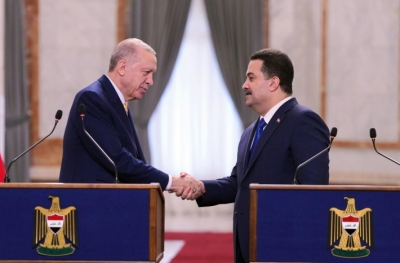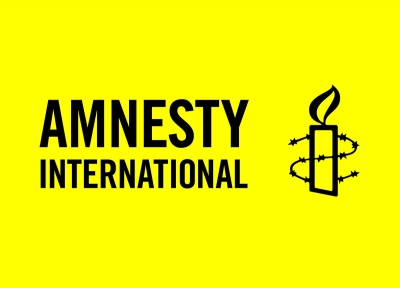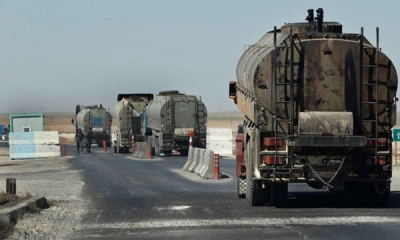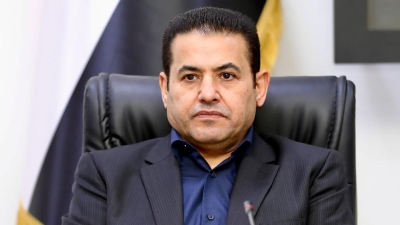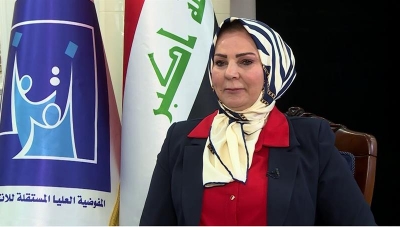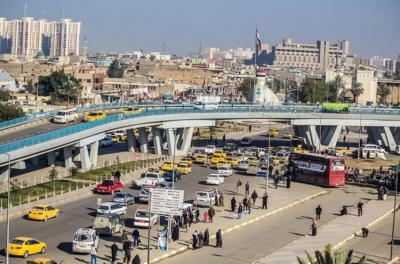The Middle East Between the United States of America and Iran

Since the end of WW2, during the Cold War, the influence of the United States of America (USA) and the Soviet Union increased in the Middle East (ME), especially in gaining influence in the self-determination rights of the new nation states from Britain and France. On some occasions, military coup d’états were supported by the two super powers. The rivalry between the USA and the Soviet Union in the ME continued until1979. Then, Afghanistan was invaded by the Soviet Union, and the USA lost influence over the Shah’s regime in Iran, which was its strongest regional ally, to an Islamic regime that depicted (and still does) the USA as the great Satan. Both incidents endangered the interests of the USA in the entire region. This article sheds light on the future of the ME between the USA and Iran as a growing regional power, and concludes with the possible scenarios that may settle the relationship of the two parties.
However, the USA did not accept this new state of affairs. In reaction to the Soviet invasion of Afghanistan, the USA supported the Mujahidin through the Arab states, especially Saudi Arabia. In regards to Iran, it supported the Iraqi regime’s eight-year war against Iran from 1980 to 1988. Eventually, the results of both were temporarily in US interests. As the result of the Iran-Iraq war, the idea of exporting the Islamic revolution of Iran was briefly stopped. Nonetheless, the Iraqi invasion of Kuwait in 1990 cracked the unity of the Arab states towards the interest of Iran’s policy in the region. In Afghanistan too, although the Soviet Union was defeated and expelled from the country, the disparities between the different factions of the Mujahidin that led to a wide civil war, and as a result incited the Afghans’ anger that brought the Taliban to power, gave rise to the Al-Qaida terrorist organisation that globally shifted its hostility towards the USA.
Although the USA directly stepped in by invading Afghanistan and Iraq respectively in 2001 and 2003, in the long run the interests of the Islamic regime in Iran and its ambitions in the wider region were actually served by the great Satan. As time passed, the more Iran secured its interests in the shadows of change in the Middle East, starting from the regime change in Iraq. To counter US policies towards Iran, and to avoid any similar plan towards Iran’s Syrian ally, both regimes in Tehran and Damascus well utilised the growth of sectarianism and terror in Iraq. Consequently, Iran not only assured its regime by the existence of the USA next-door, but also guaranteed the safe handover in Iraq from rule by an anti-Iran regime in Baghdad to a sectarian regime loyal to itself. The Iranian regime was further assured in 2011, when the US troops left Iraq, and some months earlier the Arab Spring started.
The situation was further complicated in Syria, where the Russians stepped in, creating a new quadruple alliance in the region between Iran, Russia, Syria and Iraq. Initially Turkey was against this newly emerged alliance, insisting on a regime change in Syria by supporting the Free Syrian Army. Eventually, as a reaction to the political prosperity of the Kurds in Iraq and Syria during their fight against the Islamic State in Iraq and Sham (ISIS), it accepted the alliance and started sharing its anti-US policy, if only to stop any Kurdish prosperity in the region. Thus, on the ground the number one controlling power is Iran, which under these new circumstances practically guarantees the Syrian regime remaining in power. Iraq is already a follower in its regional ambitions. Lebanon’s alliance also is guaranteed through Hezbullah, and Yemen is on the way to being under its complete control through the Houthis. Hence, the Iranian-controlled crescent zone is completed. Iran claims all these as its legitimate right to expanding its influence in the region. “Iran will not negotiate with the West over its presence in the Middle East, Supreme Leader Ayatollah Ali Khamenei said” (Aljazeera, 2018). Meanwhile, interestingly, the US president recently stated that “we’ll be coming out of Syria like very soon” (msnewsnow.com, 2018). Above all, on 4th April a tripartite summit between the presidents of Russia, Iran and Turkey took place in Ankara. According to the Mail Online “The leaders of Russia, Turkey and Iran met in Ankara for talks yesterday as they cemented their unlikely alliance over Syria in a challenge to US and western influence in the region”.
Virtually, the USA is no longer a super power, under the emerging regional powers, which would rule over the Middle East with no challenge. To the contrary, the expansion of Iran represents a real challenge to the US’s existence in the Middle East. Therefore, there are three scenarios for the relationship of Iran and the USA in the Middle East in the near future.
The first is what many Arabs believe, in the shadow of the conspiracy theory, is going on in the secret agreement between the US, Israel and Iran to rule over the Arabs. In this scenario, the USA will control the Middle East through Iran, which is its best opportunity to block future Russian ambitions and Turkey’s rebellion against its policies in the region.
The second scenario is that Iran will soon have a nuclear power. A fact the US inevitably has accepted, yet cannot face. Iran has already challenged the US in Iraq, Syria, Lebanon and Yemen, and is the only power that supports Hizbullah and Hamas, which the US considers terrorist groups. The argument here is that, if the US did have power over Iran, how could it possibly change the Iraqi regime after having accusing it of having weapons of mass destruction and supporting terror. Of course, neither of those claims was right, and with Iran proudly enjoying both those accusations, the US cannot now introduce a plan similar to that of Iraq towards Iran! Therefore, apart from its proxies, Iran alone can drive the US out of the entire region. Iran has no problem in doing so, to scarify millions of its nearly 82 million population. Thus, the US will suffer the same fate as the Soviet Union in Afghanistan and its aftermath.
The third scenario is that the US temporarily turns a blind eye to Iran and its expansionism hegemony in the Middle East, and purposely lets it expand everywhere, and then suddenly attacks, in a coalition with its alliance in the region, and that will be the end of Iran and its regime. For this, the US needs to work with Russia and Turkey. As in the case of Iraq, Russia would always look after its own interests, and in a crucial time will sell its allies. As for Turkey, apart from the Kurdish situation, it has few strategic interests with Iran, and, in the growth of sectarian politics it is trying to lead the Sunni camp. However, under this scenario, the later the US takes action, the more difficulty it will face. Because, the more time passes by, the more Iran gathers alliance and friends both in the region, and globally.
Bibliography:
Aljazeera, 2018, Supreme Leader: Iran won’t be told to do in the Middle East, Online Available at: <https://www.aljazeera.com/news/2018/03/supreme-leader-iran-won-told-middle-east-180308203616382.html>, [Seen 05 April 2018].
Mail Online, 2018, Putin Cements Powerful new Alliance with Iran and Turkey in Challenge to Trump and the West as the Three Leaders Vow to Bring a ‘Lasting Ceasefire’ to Syria at Summit in Ankara, Available at: <http://www.dailymail.co.uk/news/article-5577929/Putin-cements-alliance-Iran-Turkey-Syria-summit-Ankara.html>. [Seen 05 April 2018].
Msnewsnow.com, 2018, Trump: ‘We’ll be Coming Out of Syria Like Very Soon, Online Available at: <http://www.msnewsnow.com/clip/14236980/trump-well-be-coming-out-of-syria-like-very-soon>, [Seen 05 April 2018].
Worldometers, 2018, Iran Population Live, Online Available at: <http://www.worldometers.info/world-population/iran-population/>, [Seen 05 April 2018].
